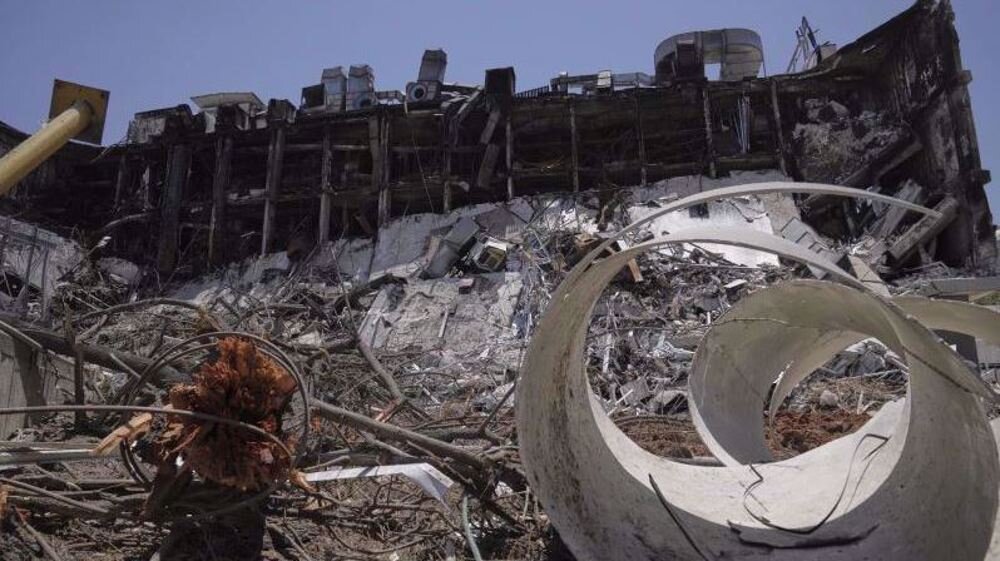Israel reconstructed air defenses after 2024 Iranian attacks, only to see them fail again in June

TEHRAN – A senior commander of the Islamic Revolution Guard Corps (IRGC) Aerospace Force, whose name and face have not been disclosed, said in a televised interview with IRIB that Iran successfully targeted Israeli air defense centers and disrupted their operations during Operation True Promise III.
The operation included at least 21 waves of missile and drone attacks against the occupied territories in the span of 12 days, after the regime initiated an all-out war against Iran on June 13.
The commander emphasized that Israel’s air defenses, even after reconstruction, were unable to prevent the Iranian attacks. He noted that, despite extensive media censorship, Iran was able to strike the regime’s air defense centers and impair their functionality.
Israel had renewed and upgraded its air defense capabilities between True Promise II and True Promise III, yet its function was again underwhelming during the subsequent operation. True Promise II targeted Israel in October of 2024.
True Promise III, one of the largest in Iranian history, involved extensive use of ballistic missiles and drones. According to the U.S.-based CTP-ISW consortium, a joint initiative of the neoconservative Institute for the Study of War and the Critical Threats Project, Iran launched 543 ballistic missiles and over 1,000 drones. The IRGC itself stated that over 3,000 projectiles were used in total, including drones and cruise missiles.
Israeli military sources confirmed 500–550 ballistic missiles were fired, largely consistent with Iranian reports. Despite claims of near-total success by Israeli and U.S. officials, post-conflict data confirmed that Israel’s missile defenses were overwhelmed.
Fox News verified a direct Iranian missile strike on the Kirya military headquarters in Tel Aviv, a central command hub. Satellite radar analysis by Oregon State University, shared with The Telegraph, revealed six successful missile impacts on five undisclosed military installations, including an intelligence facility, airfield, and logistics hub.
Haaretz journalists Avi Scharf and Bar Peleg identified 10 previously unreported strikes, far exceeding Israel’s official admission of 36 impacts. Analysts noted that many civilian injuries were caused by falling debris from interceptors as Israel attempted to block the missile waves.
Initially, Israel claimed a 90–95% interception rate, but by Day 7, The Telegraph reported that at least 16% of Iranian missiles evaded defense, an estimate viewed as conservative by experts. Post-war analysis revealed that many high-value targets were left unprotected, exposing critical weaknesses in the Israeli-U.S. missile shield.
The United States fired more than 100 THAAD interceptors (possibly up to 150) from its two deployed systems in Israel during the 12-day conflict. This rapid expenditure consumed nearly a quarter of America’s high-end stockpile, raising concerns among U.S. defense officials about the global missile defense posture and the ability to replenish supplies quickly, especially at a time when public support for Israeli defense was historically low.
Analysts now warn that, despite Israel’s claims of readiness, Tehran’s ability to penetrate air defenses demonstrates that critical gaps remain in the Israeli-U.S. missile network.
There is still no certain knowledge of the exact damage caused in the occupied territories in June. The regime imposed heavy censorship during the war and also detained a number of journalists who attempted to report on the reality on the ground after the June 24 ceasefire. It was Israel that proposed the ceasefire.
"If another war occurs, we will do to Israel what we did before, but worse this time," the IRGC commander said in his IRIB interview. "We have more experience and confidence now, and all our units are completely ready."
